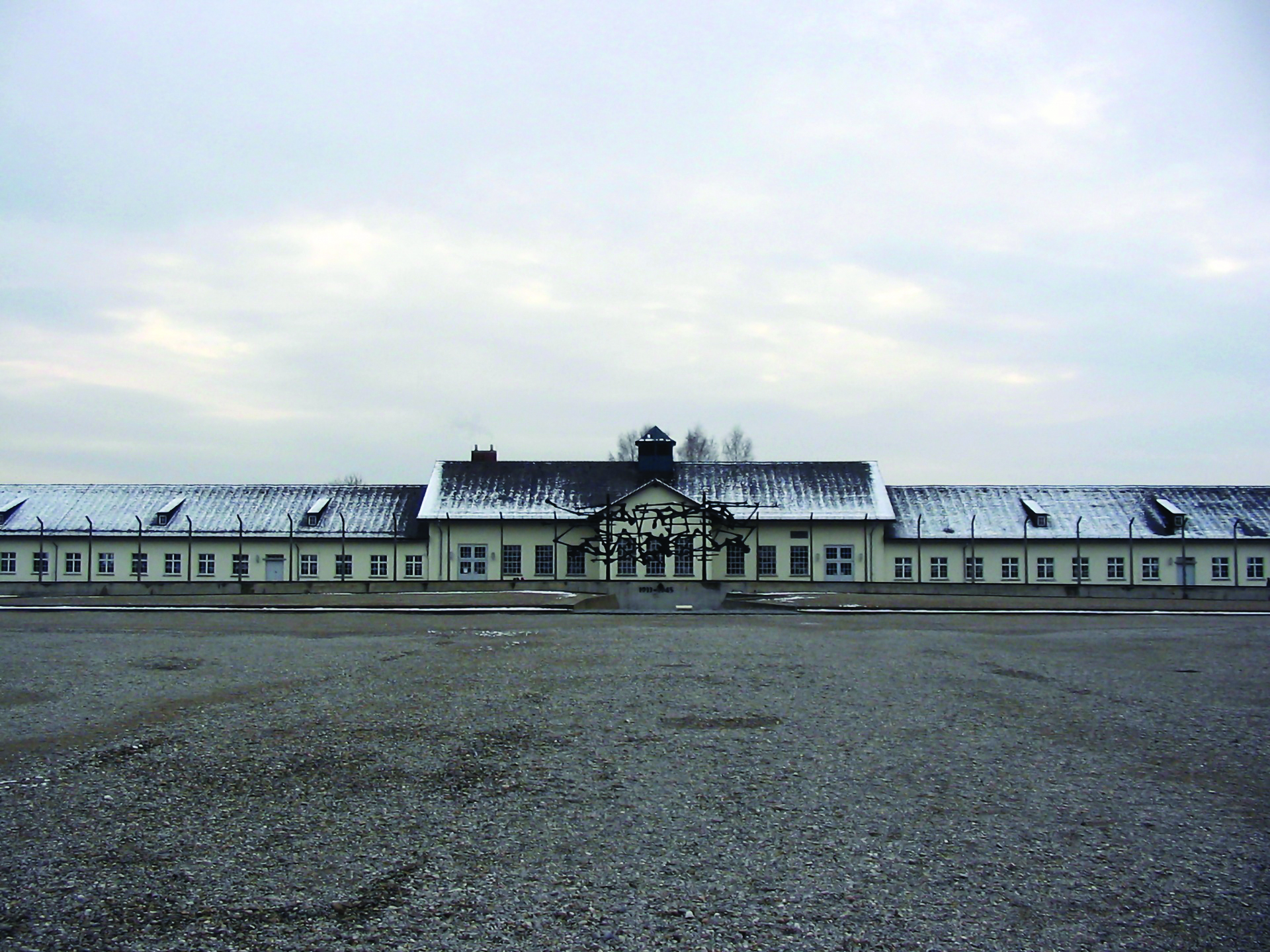International Holocaust Remembrance Day was January 27, 2021, which also marked the 76th anniversary of the liberation of Auschwitz Concentration Camp. April 29, 2021, will mark the 76th anniversary of the liberation of Dachau Concentration Camp.
Dachau opened on March 22, 1933, to hold political prisoners. Eventually, it included forced laborers, German and Austrian criminals’ imprisonment, foreign nationals from countries that Germany occupied or invaded, and ultimately, Jews. There were 32,000 documented deaths at Dachau and thousands of undocumented deaths. It served as a model for the other German concentration camps and was in operation the longest, from March 1933 to April 1945. Leonard Zerlin, a 97-year-old WWII veteran, recounts May 2, 1945, as the day he witnessed man’s inhumanity to man.
Leonard Zerlin lived in a 15 x 15 square foot pyramidal tent with six other Air Force gunners. Six men were assigned per tent, but Len was one of seven. As it turns out, they called themselves The Lucky Seven because all seven of them survived World War II. On May 2, 1945, Len was in the tent when Chaplain McNulty came into the tent and asked him to gather a group of Jewish guys and meet him at the truck in 45 minutes. Len had no idea what his friend the Chaplain had in mind, but he went from tent to tent and gathered a group together. The rest of The Lucky Seven didn’t think it was fair that only the Jewish guys got to go, so they joined too. By the time 45 minutes was up, Len had a group of 15 guys with him in the truck. Lieutenant Colonel Chaplain McNulty signed off for the vehicle and started driving to their destination.
After driving some distance, an overwhelming smell engulfed the men. When interviewed, Len said, “I can still remember the smell to this day.” Len said he looked out of the truck and saw miles of raised mounds of dirt on either side of the road. He believes that what he saw that day were bodies that had been hastily covered by dirt on either side of the roadway. When the truck stopped at their destination, the men got out. The first thing Len remembers seeing was the barbed wire and the smokestacks. As Len and the men entered the gargantuan stone entrance, they were mere moments away from finding out that Chaplain McNulty had brought them to Dachau Concentration Camp.
Once inside the barbed wire walls, the first place McNulty took them was the crematorium. Piles of ash and bones surrounded them. Nobody spoke. They couldn’t believe their eyes. Len said, “The odor of death and destruction are still with me today.” There were piles of corpses, bones, and human ashes everywhere. After touring the crematorium, McNulty took them to the barracks. The living conditions were shocking. The people were so sick that Len’s group was told not to get close to them because they would risk contamination. Len said he openly wept. It was too much; it was inconceivable. It took him weeks to process what he saw, and even then, he couldn’t speak of it. He never asked McNulty why he took them there.
The scenes encountered at the camp defy description. The United States Forces that liberated the camp discovered mass graves, horrific torture rooms, and mountains of personal items that belonged to the victims. They liberated Dachau Concentration Camp on April 29, 1945, just days before Len’s group arrived.
Len Zerlin in his own words as he reflects on what he saw when he came upon the liberation of Dachau Concentration Camp on May 2, 1945:
German efficiency for the destruction of six million Jews.
Imagine all that slaughter. How is that possible?
Herding families in cattle cars, no room to sit, jammed for days, no sanitation, minimum food, crying babies.
Forced into concentration camps. Who will live and who will die?
Separated by the ability to be slave labor, or assist hundreds of humans into poison showers per hour per oven, shoveling dead bodies like stacks of manure.
Workers undressing dead bodies, separating usable objects like gold fillings, rings, anything of value like a pawnbroker with objects for sale.
Then…the crematoriums.
Huge furnaces, shoveling dead bodies for disintegration, then disposing of bones and ashes. What efficiency…
This is the war we fought for, Dante’s Inferno.
I witnessed some of this…a haunting memory…forever.
Can the printed word ever depict the depravity of man?
Thank you for the ability of “Remembrance.”
Len

